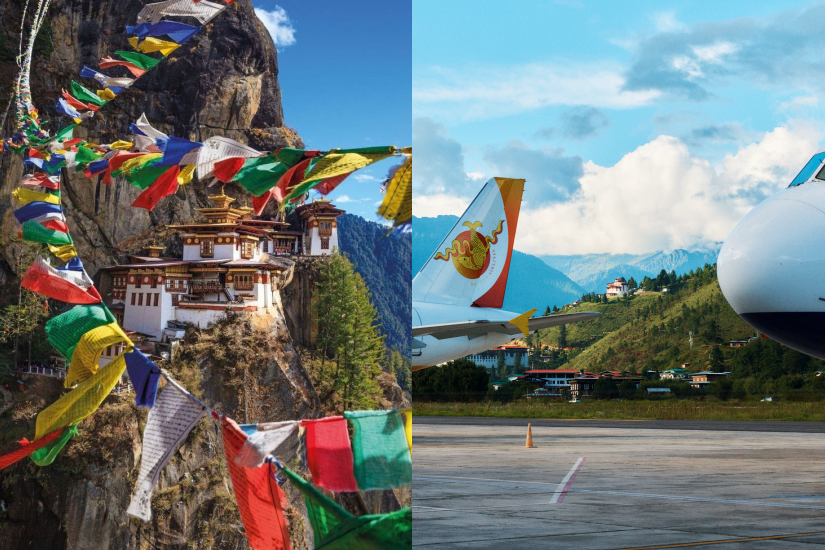Bhutan, often referred to as the “happiest country in the world,” exudes an air of mystery and sanctity. Since the release of the United Nations’ World Happiness Report in 2012, this nation nestled in the Himalayas has proudly held the title of “happiest country in the world,” ranking first in Asia and eighth globally.
How is happiness calculated? In Bhutan, there is a metric known as the Gross National Happiness (GNH), established by the former King Jigme Singye Wangchuck. This measure does not prioritize economic development; instead, it emphasizes equality, compassion, and environmental sustainability, which has allowed Bhutan to become a happy nation.
Despite having a population of only 700,000 and a less robust economic development, Bhutan’s unique culture and stunning landscapes have made it a desirable travel destination for many. Recently, Bhutan Airlines announced that it will expand its scheduled flight routes starting January 27, 2025, adding 16 round-trip flights between Hong Kong and Bhutan, making it the third country after Vietnam and Malaysia to have direct flights to Bhutan, much to the delight of Hong Kong residents!
People yearn for simple joys, but those living in modern cities seem to drift further away from simplicity. What is it like to live in the “happiest country in the world”? What are the unmissable highlights to explore? Why not plan a journey to the land of happiness and find out for yourself!
Before you set off, here are a few tips:
Be mindful of high altitudes, traditional cultures, and remember to pay taxes.
The name “Bhutan” comes from the Sanskrit term “भोट-अन्त” (Bhoṭa-anta), which means “the edge of Tibet.” This symbolizes Bhutan’s location as the southernmost point of the region influenced by Tibetan culture, nestled between India and Tibet, with an average elevation of about 3,000 meters. Therefore, it may be necessary to prepare altitude sickness medication before your trip, just in case; the time zone is UTC+6:00, which is 2 hours behind Hong Kong time.
Bhutan has an air of mystery largely due to its restricted tourism industry, which allows only 6,000 travelers to visit each year. Visitors cannot travel freely and must obtain a visa in advance, which must be arranged through a travel agency. Additionally, taking photos inside temples is strictly prohibited; before entering, visitors are required to store their cameras and electronic devices in lockers outside. As a result, most of the experiences shared online are through oral accounts, with very few videos or images available.
Entering this secret paradise is certainly not easy. Once you arrive in this peaceful land, aside from travel expenses, you must also pay a tax. The Bhutanese government imposes a daily “minimum spending amount” for foreign tourists, which ranges from approximately $200 to $250, varying slightly between the off-peak and peak seasons. This policy is implemented to protect Bhutan’s natural environment and ancient culture, so when booking your itinerary through a travel agency, you will need to pay this minimum spending requirement in advance.
However, apart from the beautiful scenery, the experience is undoubtedly the most important part of traveling in Bhutan, especially the local customs and traditional culture. To preserve this traditional culture, people are required to wear traditional clothing when going to work or school: men wear the “Gho” (a knee-length robe), while women wear the “Kira” (a long dress with a light jacket). When visiting religious places, it is important to pay attention to attire, maintaining dignity and decorum. Furthermore, the Bhutanese people are descendants of ancient Tibetans, and since the introduction of Buddhism to Bhutan in the 7th century, Tibetan Buddhism has gradually become the national religion of the Bhutanese. Items filled with Buddhist and Tibetan characteristics, such as prayer wheels and prayer flags, are part of the local culture. For instance, prayer flags have a sacred meaning, with the five colors representing the five natural elements: blue sky, white clouds, fire, water, and earth. Upon close inspection, they also bear Buddhist scriptures and symbols, used to invoke blessings and dispel misfortunes. Therefore, experiencing their faith in Bhutan is an extraordinary and unique allure.

Another unique aspect is that in the cities, including the capital of Bhutan, there are no traffic lights; instead, traffic personnel are stationed to direct traffic. Therefore, when sightseeing, it’s essential to pay special attention to traffic safety. Additionally, the local cheese paired with chili is a specialty dish, and the cheese is made from the locally raised yak, offering a distinctive flavor.
One of the largest statues of Shakyamuni Buddha in the world.
The Great Buddha Dordenma, located atop the hills of Paro County, was constructed in 2006 and stands at 52.5 meters tall, making it one of the largest statues of Shakyamuni Buddha in the world.
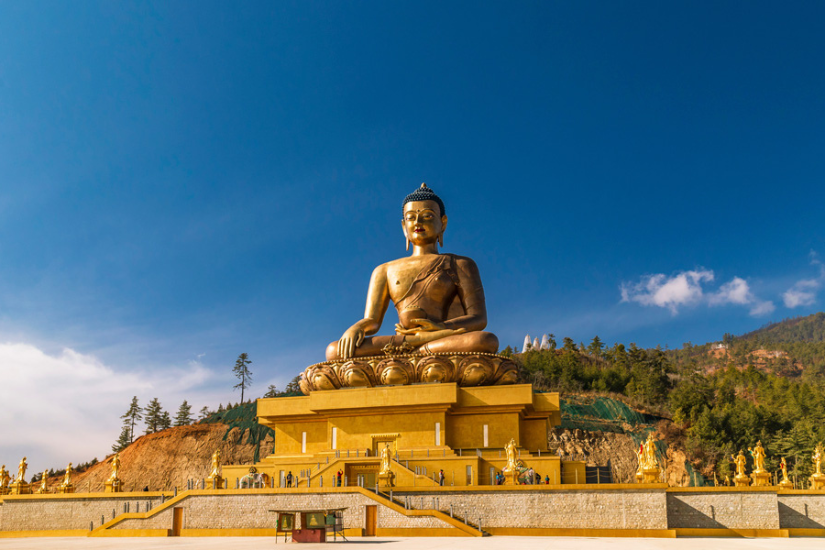
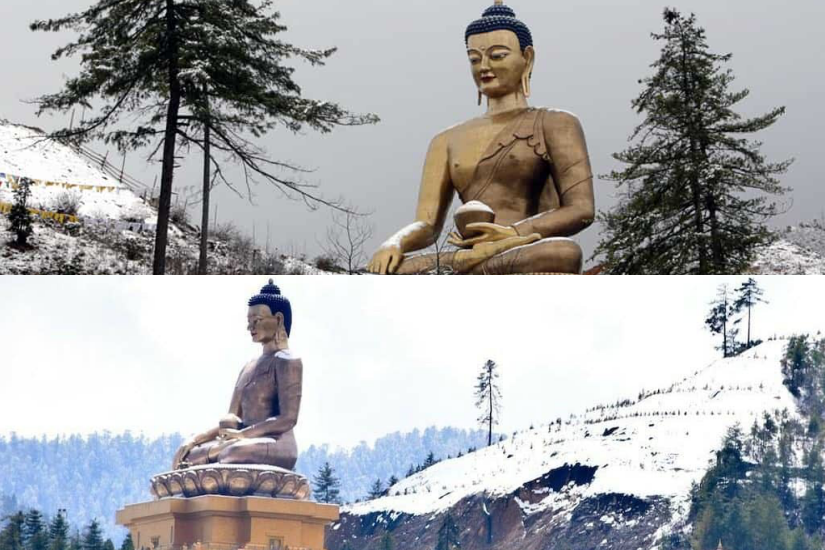
The magnificent scale and impressive architectural artistry of the Buddha statue captivate the attention of onlookers, serving as a giant guardian of Bhutan and marking an important religious and tourist attraction in the country.
2. One of the Top Ten Temples in the World
Wat Takson
Taktsang Temple (commonly known as Tiger’s Nest, Paro Taktsang), built in 1692, is dedicated to the achievements of Guru Padmasambhava. This temple stands on a cliff 900 meters above the Paro Valley, at an altitude of 3,120 meters, and is renowned as one of the top ten super temples in the world, as well as being one of the most sacred and ancient Tibetan Buddhist temples in the region.
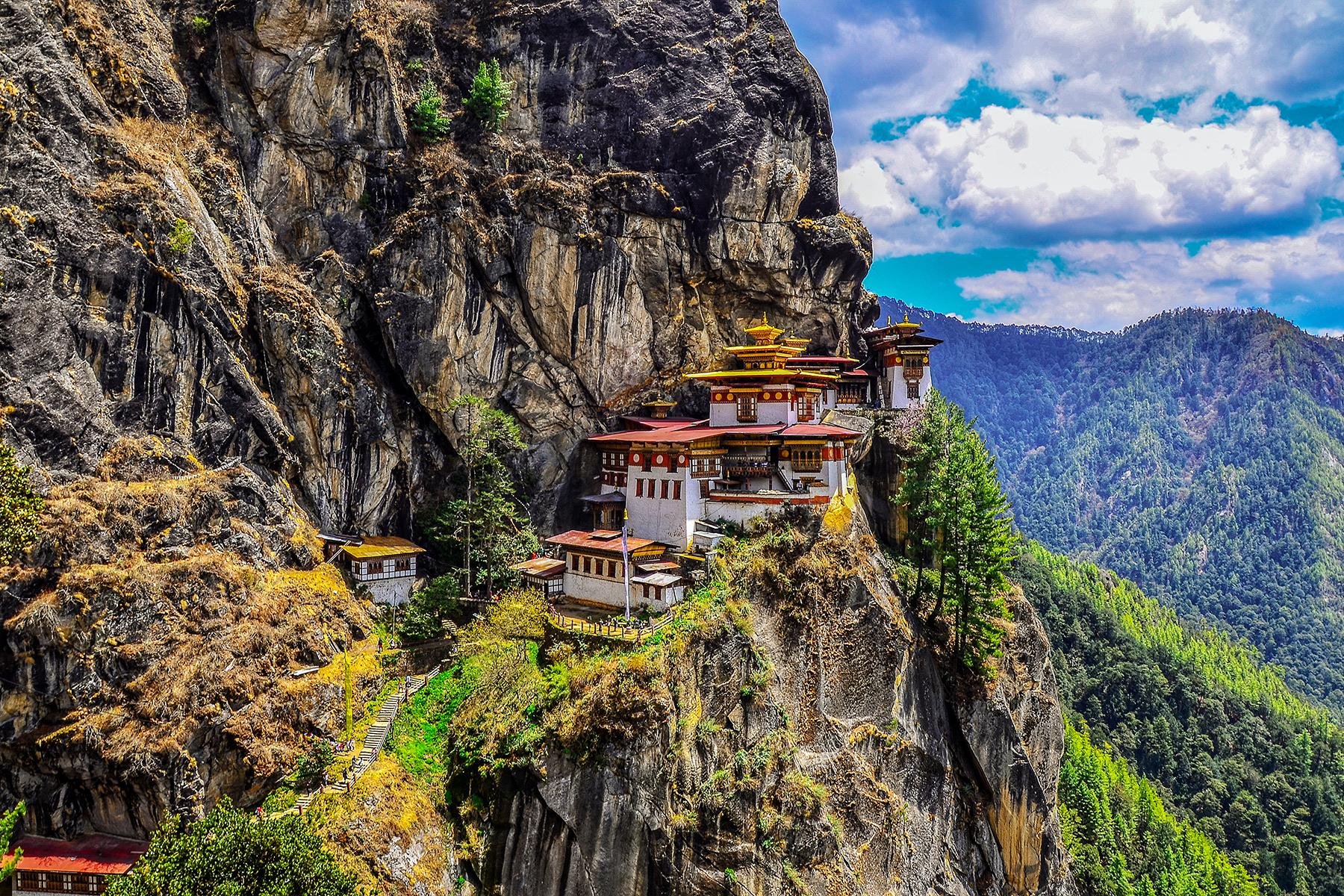
In addition to the magnificent architectural structures and beautiful landscapes, the temple also features vibrant murals and Bodhisattva statues, attracting many devotees and practitioners to come and pay their respects. In 1998, it experienced a major fire that severely damaged the temple, which was not fully restored until 2005. Fortunately, the Buddha statues were miraculously preserved during the temple’s ordeal with the fire.
According to legend, the local demon Taktsang was constantly causing trouble. When Master Padmasambhava passed through this area riding a tiger, he used his supernatural powers to manifest as Dorje Droloe, the “Wrathful One,” to subdue the demon. He then practiced here, which is why the temple still holds special sacred sites, such as the cave where Master Padmasambhava once meditated, the hall housing the crown of Vajravarahi, and the divine stone used for assessing fortune, all of which are highly valued for their aesthetic and spiritual significance.
However, the unique geographical location of Taktsang Monastery has made it one of Bhutan’s most distinctive religious buildings and tourist attractions; trekking up to it is also a form of respect and testimony to one’s faith. Thus, there is a saying in the area: “If you have not visited Tiger’s Nest, your journey in Bhutan is not complete.”
Famous Hong Kong celebrities Tony Leung and Carina Lau returned to the place of their wedding after 16 years and also visited Wat Takssang. In the photo, the two are seen walking side by side into the mountains and later took a picture after climbing.
3. One of the most magnificent temples in Bhutan
Kyichu Lhakhang (commonly known as: The Red Temple)
Kyichu Lhakhang, commonly known as the Red Tern Temple, is located in the Paro Valley at an altitude of approximately 2300 meters. It was built in the 7th century by the Tibetan king Songtsen Gampo and is one of the oldest Tibetan Buddhist temples in Bhutan.
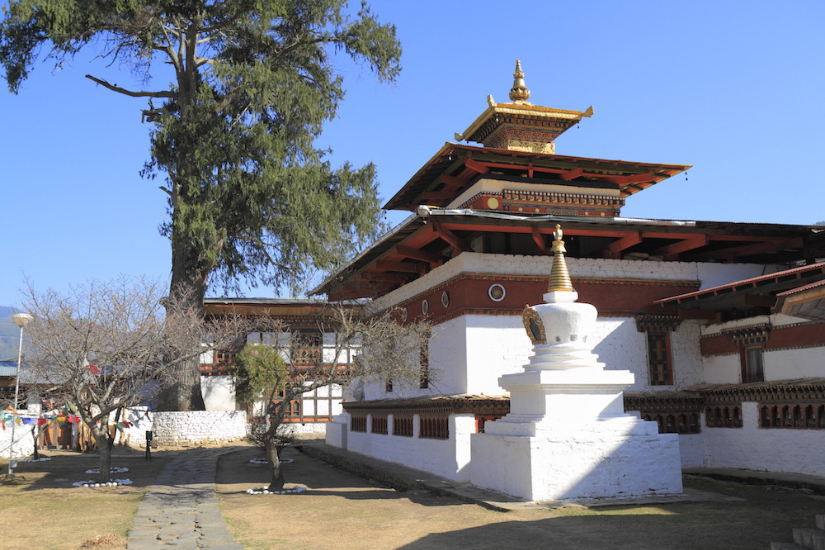
It is said that Princess Wencheng, after observing the geography of Tibet, discovered that it resembled a reclining Rakshasa demon, which could negatively impact the fortune of the Tibetan kingdom. This led to the idea of establishing the “Twelve Temples to Suppress Demons,” consisting of the Kachu Laka Temple along with eleven other temples, intended for suppression, with Kachu Laka Temple being one of the four major temples of the region.
The temple houses a wealth of precious historical artifacts, Buddhist scriptures, and statues, including those of Shakyamuni Buddha, Padmasambhava, and the Buddha Mother of Clear Illumination. Additionally, there is the stupa containing the relics of the Dharma King, the Iron Bridge Living Buddha, and the iron chains forged by the great Bodhisattva Tang Dongjiabo, known as the father of Tibetan opera. During the refurbishment of the temple in 1839, a statue of the Thousand-Armed and Thousand-Eyed Avalokiteshvara was added, which is why Zhuque Temple is also known as the Temple of Thousand-Arm and Thousand-Eyed Guanyin.
4. The place on the Bhutanese ten-rupee banknote
Paro Dzong
Paro Rinpung Dzong, built in 1644, is one of the most important fortresses/monasteries in Bhutan. It was used as a stronghold to defend the Paro Valley and was historically the center of administration and religion, as well as the site where the 10 Nu currency note of Bhutan is printed.
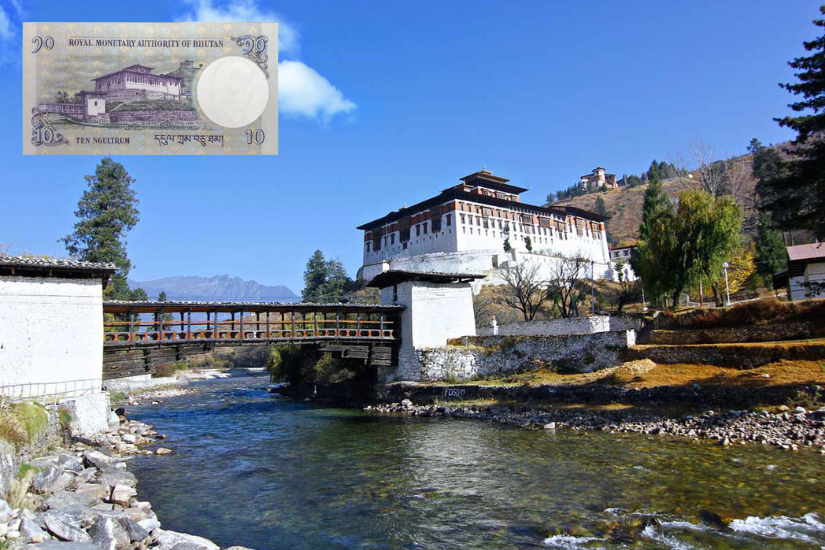
However, the grand Paro Tsechu festival is held here every spring; and the famous Bhutanese film “The Little Lama” was also filmed here.
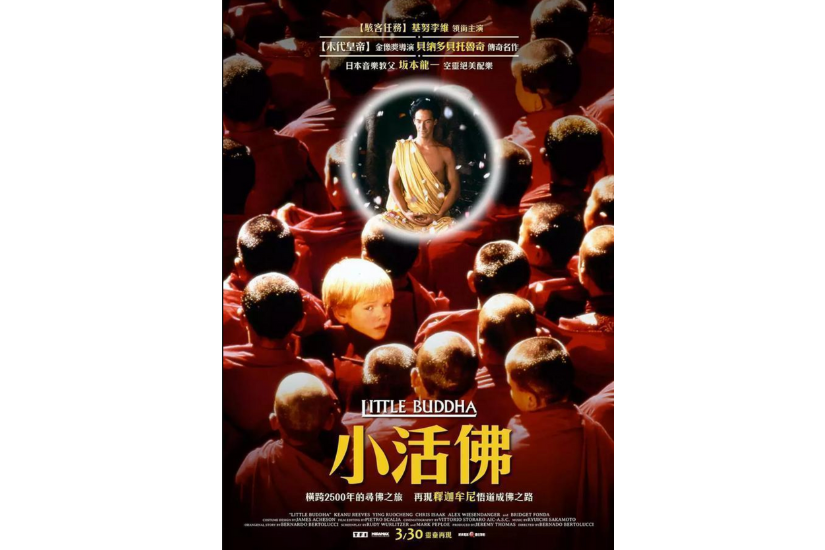
5. 108 White Stupas
Dochula Pass
Dochula Pass is the most famous pass in Bhutan. More specifically, here are 108 stupas built by the queen of Bhutan’s fourth king, known as the Chukha Wangye Memorial, which commemorates the Bhutanese soldiers who lost their lives during the conflict with India in 2003, as well as serving as a prayer for world peace. On clear days, one can enjoy a breathtaking view of the majestic Himalayas.
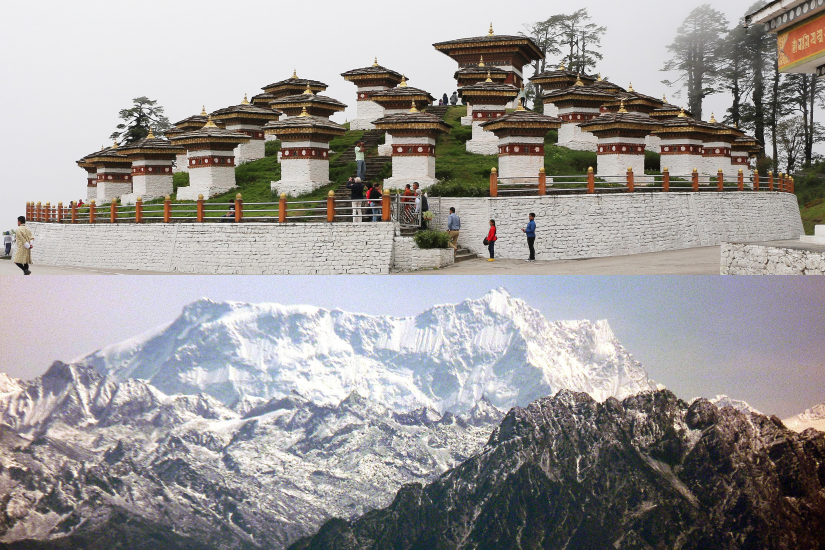
The number 108, which appears in the pagoda, is a very significant figure often found in Buddhism. According to the seventh volume of the “Treatise on the Great Perfection of Wisdom,” it states: “The ten fetters and ninety-eight bindings make one hundred and eight afflictions.” Thus, 108 symbolizes the 108 beads of a prayer mala and also represents the 108 afflictions in Buddhist philosophy.
6. Worship of Fertility
Temple of Child Seeking Chimi Lhakhang
Unlike other religions and places, Bhutanese people regard the phallus as one of their guardian deities, used for worship and blessings. There is also a temple for fertility and childbearing, Chimi Lhakhang, built in the 15th century, which has become a famous sanctuary for those seeking to conceive and is known for its effectiveness.

Traditionally, Bhutanese people believe that the symbol of the phallus can help ward off evil and bring good fortune. It is said that a famous divine madman, also known as Bhutan’s version of Ji Gong, became renowned for subduing the demons of nearby Dochula with a “thunderous brilliance of wisdom” (referring to the phallus) while defying the Buddhist precepts and showcasing his remarkable powers.
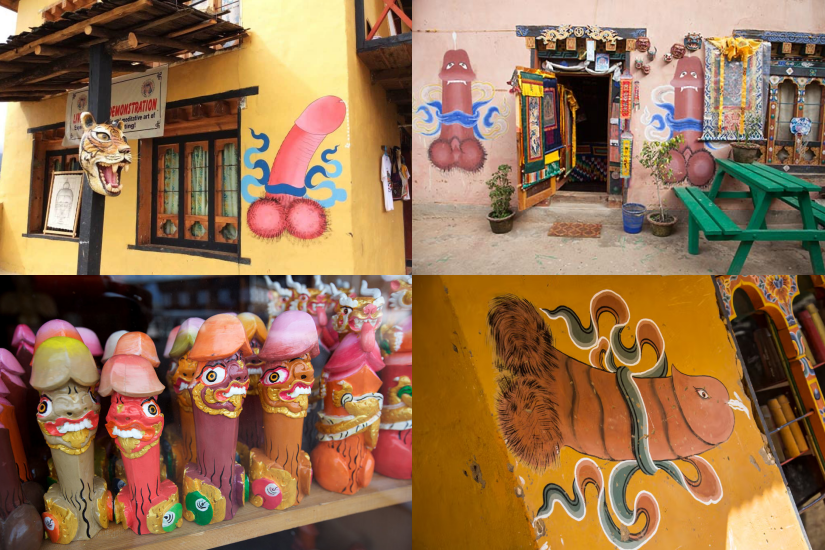
Later, in 1499, the temple was established by the cousin of Drukpa Kunley, known as the Divine Madman. In the temple, the lamas would tap the heads of worshippers with bone and wooden carvings of genitalia, symbolizing a blessing for the pilgrims. The symbol of the phallus, adorned in various vibrant colors, can be found throughout the houses and shops in Bhutan, displayed on either side of doorways, rooftops, walls, and even painted in different corners of homes. There are also various phallic souvenirs available to take home, with each shop offering unique designs, from carvings to paintings, all handcrafted in different sizes and shapes, showcasing the level of reverence the Bhutanese people have for the phallus.
*All images are sourced from the internet.

